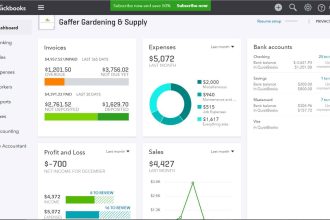Understanding your customers is crucial to the success of any business. Knowing your customers better can tailor your products, services, and marketing efforts to their needs and preferences. This can lead to increased customer satisfaction, loyalty, and sales.
- Effective Ways to Know Your Customers Better
- 1. Conduct surveys and gather feedback
- 2. Engage with customers on social media
- 3. Analyze customer data with advanced tools
- 4. Offer personalized experiences
- 5. Host events and workshops
- 6. Monitor and respond to online reviews
- 7. Use email marketing for personalized communication
- 8. Implement a customer loyalty program
- 9. Leverage CRM software
- 10. Conduct focus groups
Here, in this article, we have lined up ten effective ways to get to know your customers better. Let’s delve into the specifics!
Effective Ways to Know Your Customers Better
1. Conduct surveys and gather feedback
Surveys are a tried-and-true method of collecting valuable information about your customers. You can use surveys to gauge customer satisfaction, identify areas for improvement, and gather insights about their preferences and buying habits. You can create surveys using various platforms, such as online survey tools, social media, or even in-person at your physical store.
When creating surveys, ask open-ended questions that allow your customers to express their thoughts and opinions. This will provide you with qualitative data that you can use to make more informed business decisions.
Additionally, always make it clear why you’re asking for their feedback and how you plan to use it to improve their experience with your business.
2. Engage with customers on social media
Social media platforms offer an excellent opportunity to connect with your customers and learn more about them. You can gather insights about their interests, preferences, and behaviors by engaging with your audience on platforms such as Facebook, Instagram, Twitter, and LinkedIn.
To make the most of your social media efforts, share valuable content that resonates with your target audience and encourages them to interact with your brand. Respond to comments, answer questions, and participate in relevant discussions to show that you value their opinions and are genuinely interested in getting to know them better.
3. Analyze customer data with advanced tools
Data analysis is an essential part of understanding your customers. By leveraging advanced analytics tools, you can gain insights into your customers’ behaviors, preferences, and patterns. This information can help you segment your audience, personalize your marketing efforts, and optimize your products and services to better meet their needs.
One such tool that can assist you in this process is Leadar. By utilizing Leadar, you can obtain accurate and actionable insights into your customers’ profiles. This will enable you to make data-driven decisions and tailor your strategies to target your customers more effectively. Keep in mind that the use of such tools should always comply with privacy regulations and ethical guidelines.
4. Offer personalized experiences
Providing personalized experiences for your customers can help you get to know them better and build stronger relationships. You can use the insights you’ve gathered from surveys, social media interactions, and data analysis to create targeted marketing campaigns, recommend relevant products or services, and offer tailored promotions.
Personalization can also extend to your customer support efforts. Train your team to address customers by their names, and make sure they have access to relevant customer information to provide personalized assistance. This level of personalization will make your customers feel valued and understood, leading to a more positive customer experience overall.
5. Host events and workshops
Hosting events and workshops related to your business can be an effective way to engage with your customers and learn more about their needs, preferences, and expectations. These events can be held online or in-person and can range from product demonstrations and workshops to networking events and customer appreciation days.
By providing valuable content and experiences, you can create a space for your customers to interact with your brand, share their thoughts and opinions, and give you the opportunity to get to know them on a deeper level. Moreover, events can also help you attract new customers, increase brand awareness, and foster community engagement.
6. Monitor and respond to online reviews
Online reviews play a significant role in shaping customers’ opinions and decisions about a business. By monitoring and responding to reviews on platforms like Google, Yelp, and Facebook, you can gain insights into your customers’ experiences and address any concerns they may have.
When responding to reviews, be professional, empathetic, and constructive. Address negative feedback by acknowledging the issue and outlining the steps you will take to improve. This demonstrates your commitment to customer satisfaction and shows that you value their feedback. Positive reviews can provide valuable insights into what your customers appreciate most about your business, helping you identify your strengths and areas to continue focusing on.
7. Use email marketing for personalized communication
Email marketing is an excellent tool for maintaining regular communication with your customers and learning more about their preferences. You can send targeted and personalized messages that resonate with each group by segmenting your email list based on factors like purchase history, demographics, and engagement.
Analyze your email marketing data, such as open rates, click-through rates, and conversion rates, to identify trends and patterns in customer behavior. This information can help you optimize your email content and timing and provide insights into your customers’ preferences and interests.
8. Implement a customer loyalty program
Customer loyalty programs are an effective way to encourage repeat business and gather valuable information about your customers. By offering rewards for continued patronage, you can gain insights into your customers’ preferences and spending habits, allowing you to tailor your marketing efforts and promotions accordingly.
Additionally, loyalty programs can help you identify your most valuable customers, enabling you to focus on nurturing those relationships and providing them with exceptional service.
9. Leverage CRM software
Customer relationship management (CRM) software is a powerful tool that can help you track, manage, and analyze customer interactions across multiple channels. By using a CRM system, you can centralize customer data and gain a comprehensive view of your customers’ behaviors, preferences, and needs.
A CRM system can help you automate tasks like sending personalized emails, tracking customer interactions, and segmenting your audience based on specific criteria. This allows you to understand your customers better and create targeted marketing campaigns that boost conversions.
10. Conduct focus groups
Customer focus groups provide an opportunity for in-depth conversations with your customers about their experiences, preferences, and expectations. These discussions can help you uncover insights that may need to be apparent through surveys or social media interactions.
When running customer focus groups, create a comfortable and open environment where participants feel free to express their opinions. Ask open-ended questions, listen attentively, and probe for additional information when necessary. The insights gained from these discussions can help you improve your products, services, and overall customer experience.














